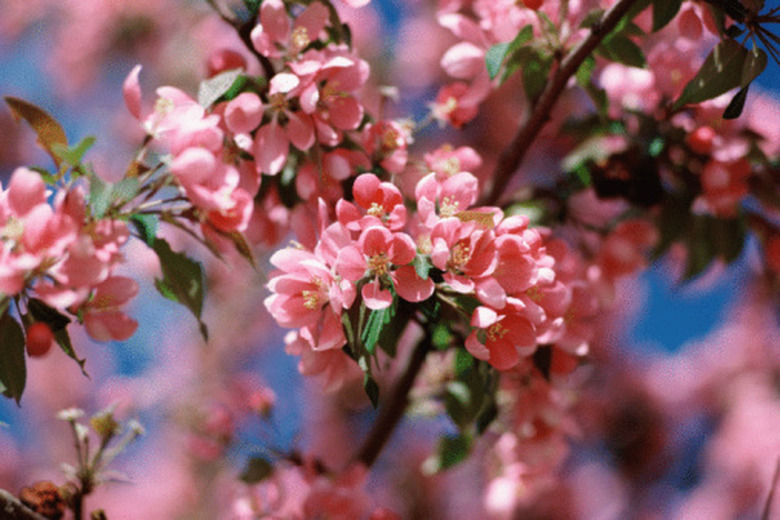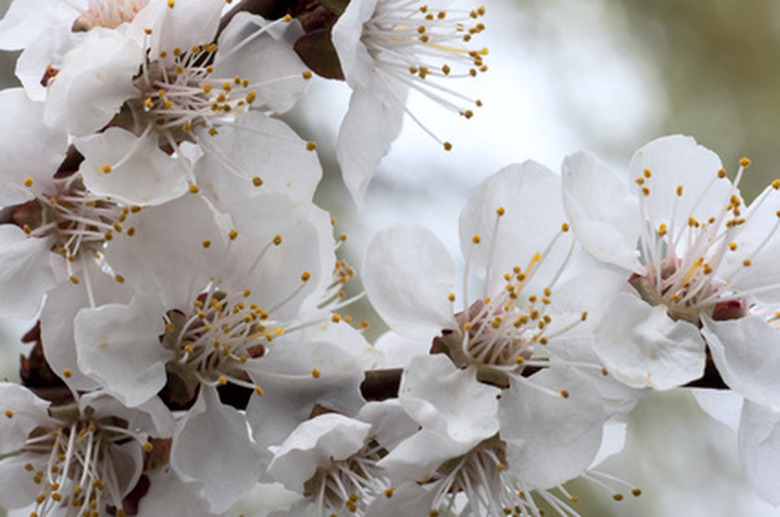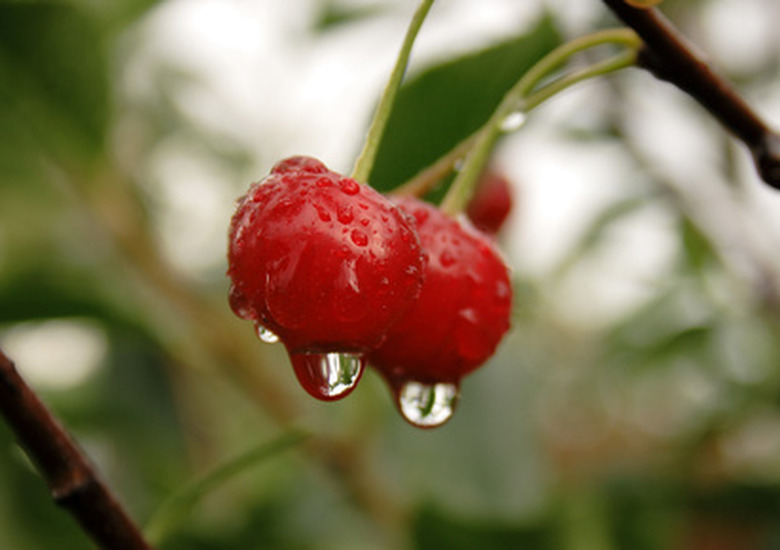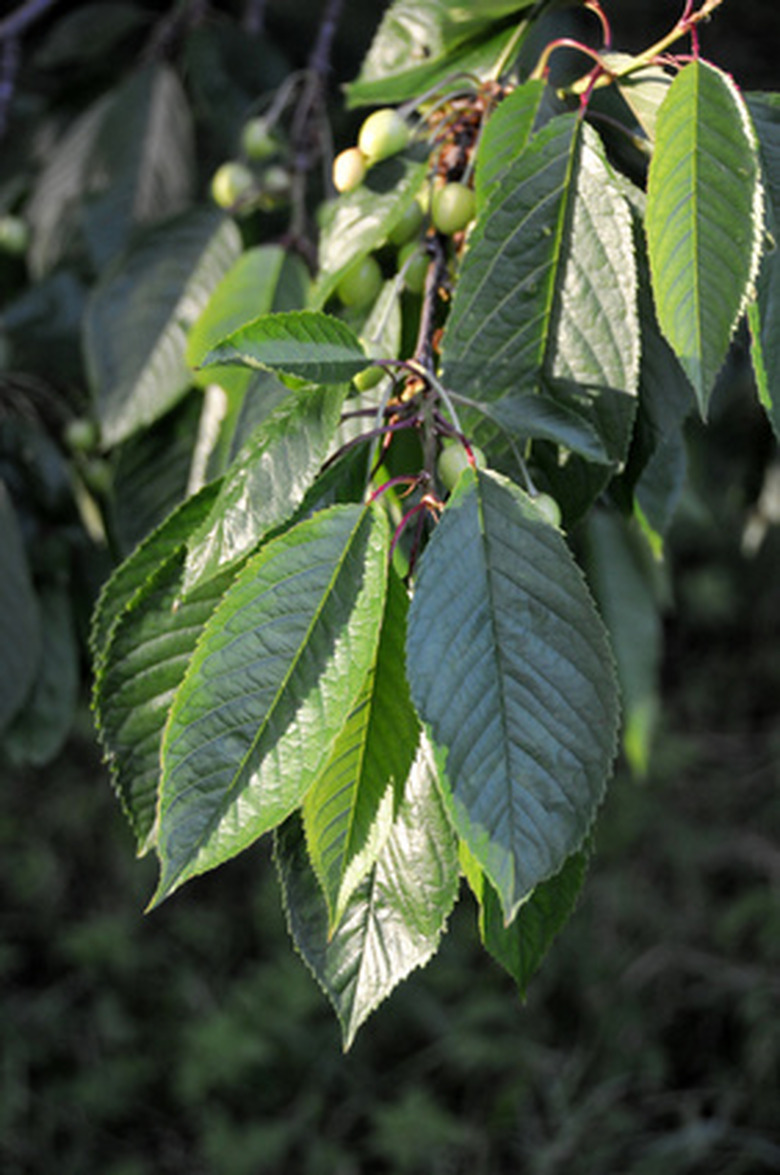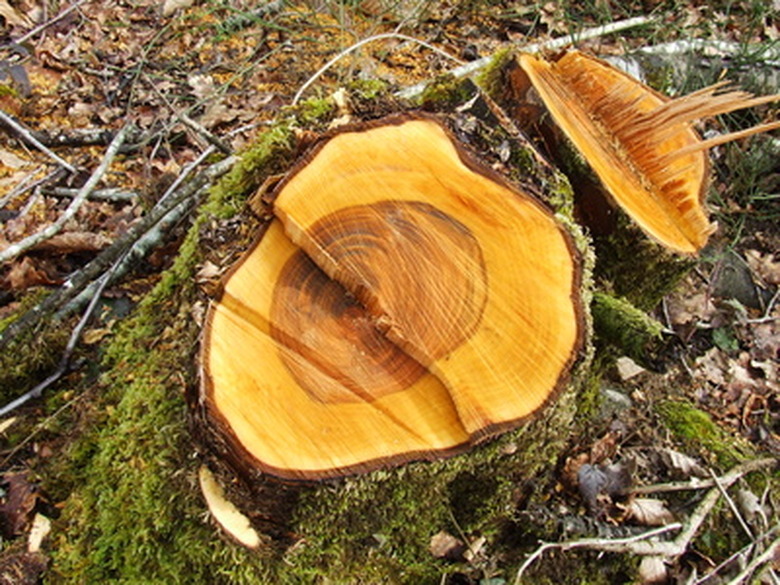Cherry Tree Characteristics
Cherry trees originated in Asia, but are now found throughout Europe, northern Africa and most of North America. These flowering, fruit-bearing trees come in more than 100 different varieties and, as a sign of spring, are celebrated in cherry blossom festivals worldwide. In addition to their attractive appearance, the trees have economic value as a source of high-quality wood and nutritious and tasty fruit.
Blossoms
Most cherry tree flowers bloom in the spring, but some types bloom in late autumn or even winter. The fragrant flowers may be light pink to pure white, and some change from white to pink over the course of a few days. Some of the most celebrated cherry trees, the sakura (cherry blossom tree) and the shedarazakura (weeping cherry tree), have the most attractive blooms. Most blossoms include five petals, while less common varieties have 10, 20 or 100.
- Cherry trees originated in Asia, but are now found throughout Europe, northern Africa and most of North America.
- These flowering, fruit-bearing trees come in more than 100 different varieties and, as a sign of spring, are celebrated in cherry blossom festivals worldwide.
Fruit
Most people are familiar with the cherry tree's small, round, edible fruit. Cherries range in color from pale to deep red, and the rarer white and yellow varieties. Cherries are generally either sweet or sour. The sweet kinds can be eaten as-is, while sour cherries are more commonly mixed with sugar to make jellies and jams.
Leaves
Cherry tree leaves usually appear at the same time as the flowers bloom, but in late-blooming trees, the leaves may appear after the flowers. Fresh leaves can be pale copper to dark green, are two to six inches long and have finely toothed edges that converge to a single point. In the fall, cherry tree leaves may turn pink, orange, crimson or brown.
- Most people are familiar with the cherry tree's small, round, edible fruit.
- The sweet kinds can be eaten as-is, while sour cherries are more commonly mixed with sugar to make jellies and jams.
Bark and Wood
Cherry tree bark is reddish brown, and its red, fine-grained wood is ideal for furniture making. Cabinets and tables made from cherry tree wood are durable and seem to emit a soft glow.
